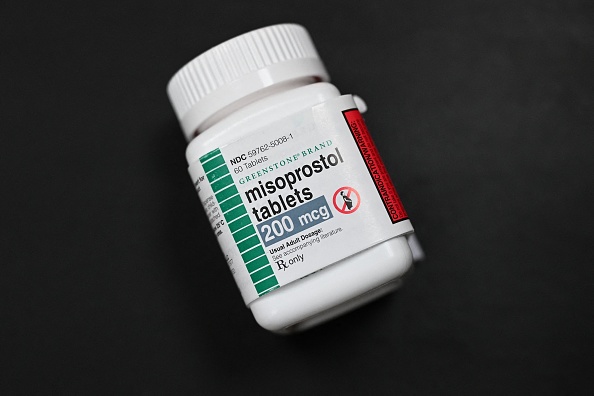
By Kelsey Butler | Bloomberg
While the fate of mifepristone, also known as the abortion pill, plays out in US courts, health-care providers have another drug they can continue to use to offer medication abortion.
Misoprostol is primarily an ulcer medication, but it’s used in conjunction with mifepristone in 98% of all reported medication abortions in the US, according to the Guttmacher Institute, a research organization that backs reproductive rights. The combination is “the gold standard for medication abortion in the US and elsewhere,” said Alice Mark, interim medical advisor for the National Abortion Federation.
But misoprostol can also be used on its own to end a pregnancy and multiple health-care providers have said they’d prescribe it on its own if mifepristone disappears from the market.
Last week US District Judge Matthew Kacsmaryk, appointed by President Donald Trump, issued an order suspending the decades-old approval for mifepristone. Late Wednesday, the 5th US Circuit Court of Appeals partially stayed that ruling.
Under the appeals court order, mifepristone could no longer be prescribed after the seventh week of pregnancy or dispensed by mail. Attorney General Merrick Garland said Thursday that the Biden administration will ask the US Supreme Court to intervene and protect the availability of the drug.
Here’s a look at how misoprostol fits into abortion care in the US.
What is misoprostol and what is it used for?
Misoprostol, originally developed in 1973, was first marketed as a treatment for gastrointestinal issues. One of its side effects is that it induces miscarriages and in the late 1980s, women in Brazil with no legal access to abortion began taking it to end pregnancies. It has a two year shelf life.
Approved in the US to treat stomach ulcers, the drug also causes contractions that empty the uterus. In the US, it is often used in combination with mifepristone, which blocks progesterone, a hormone that’s necessary for a pregnancy. Both drugs are also used in miscarriage treatment.
Medication abortion has become increasingly popular in the US because it’s a less invasive and is seen as a more convenient alternative to having a procedure done at a health-care clinic. As of 2020 more than 50% of all facility-based abortions were done using pills, up from 24% about a decade earlier.
That number is likely higher now because it’s easier to access by mail and via telemedicine, something which patients are increasingly relying on for abortion care. In April, virtual care accounted for 4% of all abortions; by December it was 11%, according to a report from the Society of Family Planning.
Is it effective?
Patients that take three or more doses of only misoprostol see an 87-93% effectiveness rate at ending a pregnancy without additional treatment, according to an article published online in the Contraception journal.
That’s slightly less effective than terminations that use both mifepristone and misoprostol, data show. When taken together, the two drug combination has an efficacy rate of more than 95% in safely ending pregnancies with no further intervention.
Is it safe?
Much like the standard two-drug protocol, misoprostol-only terminations are “extremely safe,” said Ushma Upadhyay, a public health social scientist at the University of California San Francisco.
In a 2019 review of data from 12,829 patients, 0.7% of patients that ended pregnancies only with misoprostol were hospitalized or received a transfusion. The American College of Obstetricians and Gynecologists says using the misoprostol-only protocol is an acceptable alternative to the two-drug regimen while the World Health Organization recommends its use up to 12 weeks in pregnancy.
What are the side effects?
𝗖𝗿𝗲𝗱𝗶𝘁𝘀, 𝗖𝗼𝗽𝘆𝗿𝗶𝗴𝗵𝘁 & 𝗖𝗼𝘂𝗿𝘁𝗲𝘀𝘆: www.mercurynews.com
𝗙𝗼𝗿 𝗮𝗻𝘆 𝗰𝗼𝗺𝗽𝗹𝗮𝗶𝗻𝘁𝘀 𝗿𝗲𝗴𝗮𝗿𝗱𝗶𝗻𝗴 𝗗𝗠𝗖𝗔,
𝗣𝗹𝗲𝗮𝘀𝗲 𝘀𝗲𝗻𝗱 𝘂𝘀 𝗮𝗻 𝗲𝗺𝗮𝗶𝗹 𝗮𝘁 dmca@enspirers.com


